poland
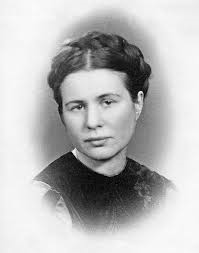 Some would consider the actions of Irena Sendler a crime, while others would consider them heroic. I suppose it was a crime, at the time it happened…a crime of opportunity, because her actions were illegal, but how could she had done anything different? Irena Sendler was born in Otwock, Poland, on February 15, 1910, to Stanislaw Henryk Krzyzanowski, a physician, and his wife, Janina Karolina Grzybowska Krzyzanowski. Irena grew up there in Otwock, a town about 15 miles southeast of Warsaw, where there was a Jewish community. Her father was a kind man who treated the very poor, including Jews, free of charge. Stanislaw died in February 1917 after he contracted typhus from his patients. After his death, the Jewish community offered financial help for the widow and her daughter, though Janina Krzyzanowski declined their assistance. I’m sure she knew they really didn’t have the money to help, but offered because of her husband.
Some would consider the actions of Irena Sendler a crime, while others would consider them heroic. I suppose it was a crime, at the time it happened…a crime of opportunity, because her actions were illegal, but how could she had done anything different? Irena Sendler was born in Otwock, Poland, on February 15, 1910, to Stanislaw Henryk Krzyzanowski, a physician, and his wife, Janina Karolina Grzybowska Krzyzanowski. Irena grew up there in Otwock, a town about 15 miles southeast of Warsaw, where there was a Jewish community. Her father was a kind man who treated the very poor, including Jews, free of charge. Stanislaw died in February 1917 after he contracted typhus from his patients. After his death, the Jewish community offered financial help for the widow and her daughter, though Janina Krzyzanowski declined their assistance. I’m sure she knew they really didn’t have the money to help, but offered because of her husband.
In 1931, Irena married Mieczyslaw Sendler, and the couple moved to Warsaw before the outbreak of World War II. The couple divorced in 1947. Irena then married Stefan Zgrzembski. They had three children, Janina, Andrzej (who died in infancy), and Adam (who died of heart failure in 1999). Then, they divorced in 1957. She remarried Mieczyslaw Sendler in 1961, but they divorced again in 1971. In college, Irena 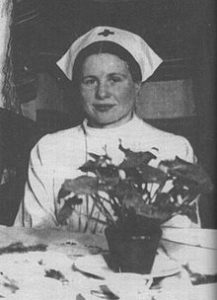 had studied to became a social worker, and she remembered the lessons of her father…to show kindness to others. It was a life lesson that would prove useful in Irena’s future.
had studied to became a social worker, and she remembered the lessons of her father…to show kindness to others. It was a life lesson that would prove useful in Irena’s future.
When the Nazis invaded Poland in 1939, Irena had access to the Warsaw Ghetto through her job. The ghetto was where hundreds of thousands of Jews were imprisoned. The situation there appalled her. Irena became a member of the Council to Aid Jews, and worked as a social worker, overseeing the city’s canteens, which provided assistance to people in need. After the Nazi invasion, Irena and her colleagues also used the canteens to provide medicine, clothing and other necessities to the city’s persecuted Jewish population. Her actions enabled her to help rescue 2,500 Jewish children from the ghetto. The group had several ways of smuggling the children out of the ghetto. Some were carried out in caskets or potato sacks, while others left in ambulances or snuck out through underground tunnels. Still others entered the Jewish side of a Catholic church that straddled the ghetto boundary and left on the other side with new identities. Irena then helped place the children at convents or with non-Jewish families. The operation was run with clockwork-like precision. As the situation grew worse for the ghetto’s inhabitants, Irena went beyond rescuing orphans and began asking parents to let her try to get their children to safety. Although she couldn’t guarantee the children’s survival, she could tell parents that their children would at least have a chance. The parents knew that it would be their  children’s only chance. Irena kept detailed records and lists of the children she helped buried in a jar. She planned to reunite the rescued children and their parents after the war. Unfortunately, most of the parents did not survive.
children’s only chance. Irena kept detailed records and lists of the children she helped buried in a jar. She planned to reunite the rescued children and their parents after the war. Unfortunately, most of the parents did not survive.
On October 20, 1943, the Nazis arrested Irena and sent her to Pawiak Prison. She was tortured in an attempt to get her to reveal the names of her associates. She refused and was sentenced to death. However, Council to Aid Jews members bribed the prison guards, and Irena was released in February 1944. Irena continued her work until the war ended, by which time she and her colleagues had rescued approximately 2,500 children. It has been estimated that Irena personally saved about 400 children. In 1965, Irena was honored for her courageous actions during the Holocaust. She was given Israel’s Yad Vashem to honor her as “Righteous Among the Nations.” Irena died in Warsaw, Poland on May 12, 2008, at the age of 98.
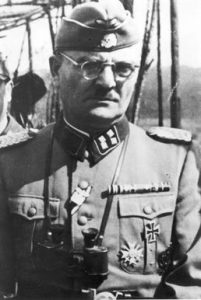 The horrors of the Nazis were many, but the worst were what they did to the Jewish people. The gas chambers and the labor camps, experimentation and beatings, were horrible, and this only names a few of the things they did. Hitler was intent on killing as many Jews as he could, and he didn’t care how it got done, as long as it got done. One of the worst, in fact the second worst event of World War II, exceeded only by the 1941 Odessa massacre. The Aktion Erntefest, which translates to Operation Harvest Festival was the murder of 42,000 Jews at the same time. How anyone could call something like that a “festival” is beyond me.
The horrors of the Nazis were many, but the worst were what they did to the Jewish people. The gas chambers and the labor camps, experimentation and beatings, were horrible, and this only names a few of the things they did. Hitler was intent on killing as many Jews as he could, and he didn’t care how it got done, as long as it got done. One of the worst, in fact the second worst event of World War II, exceeded only by the 1941 Odessa massacre. The Aktion Erntefest, which translates to Operation Harvest Festival was the murder of 42,000 Jews at the same time. How anyone could call something like that a “festival” is beyond me.
The action was set in motion by the SS and Order Police, and the Ukrainian Sonderdienst formations in the General Government territory of occupied Poland. The murder of the Jewish laborers in concentration camp Lublin/Majdanek and the forced-labor camps Trawniki and Poniatowa was an unfathomable atrocity. The murders were  performed in retaliation for the uprisings at the Treblinka and Sobibor killing centers and the Warsaw, Bialystok, and Vilna ghettos that had led to increased concerns about Jewish resistance. To prevent further resistance, SS chief Heinrich Himmler ordered the killing of surviving Jews in the Lublin District of German-occupied Poland. Most of the remaining Jews were employed in forced-labor projects and were concentrated in the Trawniki…at least 4,000 people, Poniatowa…at least 11,000 people, and Majdanek…about 18,000 people. They were killed at Majdanek, near Lublin on November 3rd and 4th, 1943.
performed in retaliation for the uprisings at the Treblinka and Sobibor killing centers and the Warsaw, Bialystok, and Vilna ghettos that had led to increased concerns about Jewish resistance. To prevent further resistance, SS chief Heinrich Himmler ordered the killing of surviving Jews in the Lublin District of German-occupied Poland. Most of the remaining Jews were employed in forced-labor projects and were concentrated in the Trawniki…at least 4,000 people, Poniatowa…at least 11,000 people, and Majdanek…about 18,000 people. They were killed at Majdanek, near Lublin on November 3rd and 4th, 1943. 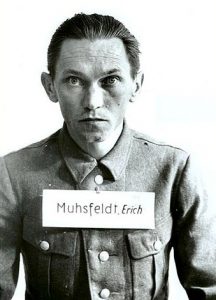 The SS shot them in large prepared ditches outside the camp fence near the crematorium. Jews from other labor camps in the Lublin area were also taken to Majdanek and shot. Loud music was played through speakers at both Majdanek and Trawniki to drown out the noise of the mass shootings. The killing at Majdanek was the largest single-day, single-location massacre during the Holocaust.
The SS shot them in large prepared ditches outside the camp fence near the crematorium. Jews from other labor camps in the Lublin area were also taken to Majdanek and shot. Loud music was played through speakers at both Majdanek and Trawniki to drown out the noise of the mass shootings. The killing at Majdanek was the largest single-day, single-location massacre during the Holocaust.
On the orders of Christian Wirth and Jakob Sporrenberg, the approximately 42,000 to 43,000 Jews were gunned down, and dumped in the ditches. It was not only retaliation for actions of rebellion, but probably also a way to deter any further resistance among the other Jews. The fact that the Jews were viewed an non-humans, made it easier to kill them, I suppose, but the killing were beyond horrible to most decent people, but to the Nazis it was almost considered sport or at the very least fun. To anyone who values human life, it was totally horrific.
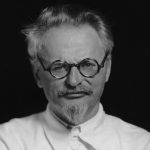
 The process of trying to end a war and bring peace between nations is a tricky one, and one that can end up being highly volatile, or even explode into further fighting!! The world was in the midst of World War I, and an armistice had been signed between Russia and Germany. The Soviet government had requested peace negotiations on Nov. 8, 1917. They began on December 22, 1917, nearly three weeks after a ceasefire was declared on the Eastern Front. Representatives of the two countries began peace negotiations at Brest-Litovsk, near the Polish border in what is now the city of Brest, in Belarus. They were divided into several sessions. During this time, the Soviet delegation tried to prolong the proceedings, so they could take full advantage of the opportunity to issue propaganda statements. Meanwhile, the Germans grew increasingly impatient with the delays.
The process of trying to end a war and bring peace between nations is a tricky one, and one that can end up being highly volatile, or even explode into further fighting!! The world was in the midst of World War I, and an armistice had been signed between Russia and Germany. The Soviet government had requested peace negotiations on Nov. 8, 1917. They began on December 22, 1917, nearly three weeks after a ceasefire was declared on the Eastern Front. Representatives of the two countries began peace negotiations at Brest-Litovsk, near the Polish border in what is now the city of Brest, in Belarus. They were divided into several sessions. During this time, the Soviet delegation tried to prolong the proceedings, so they could take full advantage of the opportunity to issue propaganda statements. Meanwhile, the Germans grew increasingly impatient with the delays.
The leader of the Russian delegation was Leon Trotsky, the Bolshevik People’s Commissar for Foreign Relations. Max Hoffmann, the commander of German forces on the Eastern Front, served as one of the chief negotiators on the German side. The main difference of opinion in Brest-Litovsk was over the surrender of Russian land to the Germans. The Russians demanded a peace agreement without annexations or indemnities and the Germans were unwilling to concede on this point. In February 1918, Trotsky announced he was withdrawing the Russians from the peace talks, and the war was on again. This would turn out to be one of the biggest, if no the biggest mistake of his career.
With the renewal of fighting, the Central Powers quickly took the upper hand. In a way, it was Russia against the world, and Russia was not likely to win that one. The Central Powers quickly seized control of most of Ukraine and Belarus. The Bolshevik hope that the workers of Germany and Austria, offended by their governments’ obvious territorial ambition, would rise up in rebellion in the name of the international working class people, soon vanished. Russia was fighting a losing battle, and they would have to surrender in the end.
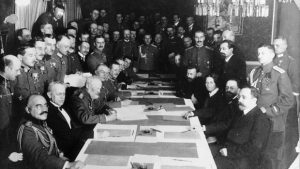
The end came on March 3, 1918, when Russia accepted peace terms that were even more harsh than those originally suggested by Germany. Russia would lose Poland, Lithuania, and the Baltic states of Estonia, Livonia, and Courland to Germany. To further devastate Russia’s hopes, Finland and the Ukraine saw Russia’s weakness as an opportunity to declare their independence. In all, Brest-Litovsk deprived Lenin’s new state of one million square miles of territory and one-third of its population, about 55 million people. Sometimes, it’s better to settle, rather than risk a loss far more devastating.
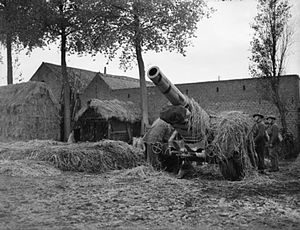 A declaration of war usually means that the people in both areas within the dispute had better prepare for eminent attack, because the declaration of war is like firing the warning shot before the actual open-fire begins. Of course, it may not be an immediate attack, but the attack always comes…or does it. On September 3, 1939, the United Kingdom and France declared war on Nazi Germany, after the Germans invaded Poland. Over the next eight months, at the start of World War II, there were no major military land operations on the Western Front. Strange, considering that the United Kingdom and France had declared war on Nazi Germany. You would think that they would attack or something, but nothing happened. During those eight months, Poland was overrun. It took about five weeks for the German Invasion of Poland beginning September 1, 1939 and the Soviet invasion beginning on 17 September 1939. Still, the Western Allies did nothing. I guess I don’t understand that. War had been declared by each side, but no Western power would
A declaration of war usually means that the people in both areas within the dispute had better prepare for eminent attack, because the declaration of war is like firing the warning shot before the actual open-fire begins. Of course, it may not be an immediate attack, but the attack always comes…or does it. On September 3, 1939, the United Kingdom and France declared war on Nazi Germany, after the Germans invaded Poland. Over the next eight months, at the start of World War II, there were no major military land operations on the Western Front. Strange, considering that the United Kingdom and France had declared war on Nazi Germany. You would think that they would attack or something, but nothing happened. During those eight months, Poland was overrun. It took about five weeks for the German Invasion of Poland beginning September 1, 1939 and the Soviet invasion beginning on 17 September 1939. Still, the Western Allies did nothing. I guess I don’t understand that. War had been declared by each side, but no Western power would 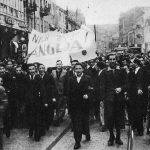 launch a significant land offensive…even though the terms of the Anglo-Polish and Franco-Polish military alliances obligated the United Kingdom and France to assist Poland. They simply stood by and let it happen.
launch a significant land offensive…even though the terms of the Anglo-Polish and Franco-Polish military alliances obligated the United Kingdom and France to assist Poland. They simply stood by and let it happen.
The quiet of the so-named Phoney War was marked by a few Allied actions. During the Saar Offensive in September, France attacked Germany with the intention of assisting Poland, but the attack fizzled out within days and the French withdrew. In November, the Soviets attacked Finland in the Winter War. This resulted in much debate in France and Britain about helping Finland, but this campaign was delayed until the Winter War ended in March. The Allied discussions about a Scandinavian campaign caused concern in Germany and resulted in the German invasion of Denmark and Norway in April. Then the Allied troops that were previously assembled for Finland were redirected to Norway instead. Fighting there continued until June when the Allies evacuated, ceding Norway to Germany in response to the German invasion of France, which had taken place on May 10, 1940.
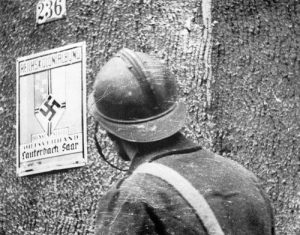
The Germans launched attacks at sea during the autumn and winter of 1939, against British aircraft carriers and destroyers, sinking several including the carrier HMS Courageous with the loss of 519 lives. Action in the air began on October 16, 1939 when the Luftwaffe launched air raids on British warships. There were various minor bombing raids and reconnaissance flights on both sides, but nothing that could possibly be viewed as a clear offensive….and during that whole time, people were dying and being subjected to various atrocities, because no one would help. Yes, war was declared, but it was a phony war, and apparently a phony declaration.
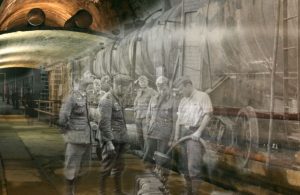
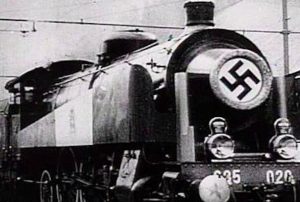 So much is still unknown about the things that Adolf Hitler did, including an apparent “Ghost Train” that was filled with gold and other treasures. According to legend, as the Soviet forces approached in the final days of World War II, an armored train left the city of Breslau (now Wroclaw, Poland) in April 1945 and headed west toward Waldenburg (now Walbrzych). Somewhere along the 40 mile trip, the train and its cargo of gold and other treasures…many of them stolen by the Nazis from Jewish families…vanished into the Owl Mountains, never to be seen again, except in local legend. Stories of the Nazi “Ghost Train” date back some 70 years, although historians haven’t been able to conclusively prove the train ever existed. During the war, Hitler ordered the creation of a network of underground tunnels in the Owl Mountains, which at the time were under German control, as part of a project known as “Riese,” meaning “Giant.” The original rumor of a Nazi train hidden in the mountains came from a Polish miner, who claimed that just after the war, German miners told him they had seen the train being pushed into one of the tunnels.
So much is still unknown about the things that Adolf Hitler did, including an apparent “Ghost Train” that was filled with gold and other treasures. According to legend, as the Soviet forces approached in the final days of World War II, an armored train left the city of Breslau (now Wroclaw, Poland) in April 1945 and headed west toward Waldenburg (now Walbrzych). Somewhere along the 40 mile trip, the train and its cargo of gold and other treasures…many of them stolen by the Nazis from Jewish families…vanished into the Owl Mountains, never to be seen again, except in local legend. Stories of the Nazi “Ghost Train” date back some 70 years, although historians haven’t been able to conclusively prove the train ever existed. During the war, Hitler ordered the creation of a network of underground tunnels in the Owl Mountains, which at the time were under German control, as part of a project known as “Riese,” meaning “Giant.” The original rumor of a Nazi train hidden in the mountains came from a Polish miner, who claimed that just after the war, German miners told him they had seen the train being pushed into one of the tunnels.
In 2015, two anonymous men contacted officials in Walbrzych, a district in southwestern Poland, claiming to know the train’s location and demanding 10 percent of the value of its contents in exchange for leading authorities there. According to Marika Tokarska, an official in the southwestern Polish district of Walbrzych, a law firm representing two men…a Pole and a German, who prefer to remain anonymous…sent her office two letters, offering a description of the train and its contents and claiming to know its location. The documents received from the law firm claim the train is some 490 feet long and loaded with guns, precious metals and other valuables, including up to 300 tons of gold. In exchange for revealing the train’s location, the men are demanding 10 percent of the value of its contents. Although there is much skepticism expressed by historians as to the validity of the men’s claims, authorities in Walbrzych say they will pay the reward if the information turns out to be legitimate. I guess I would too. The men are asking 10% of the total, which could be a huge amount, but not nearly as much as the remaining 90%, so paying them would make sense. As Tokarska told the Associated Press: “We believe that a train has been found. We are taking this information seriously.” Though the men’s knowledge of the train’s contents and their retaining of a lawyer lend legitimacy to their claims, there is still plenty room for skepticism: The first letter from the men’s law firm included several references to local topography suggesting the men might not be as familiar with the area as they claim, and previous searches for the train in recent years have yielded nothing.
Andreas Richter, a German, and Piotr Koper, a Pole, moved in with heavy equipment and dug deep at a site near rail tracks in Walbrzych, following comments by residents who said they had knowledge of the train’s 
 existence. Richter and Koper said that their own tests using earth-penetrating radar confirmed a train was at the site. Nevertheless, after an initial dig, the crew turned up no sign of the “Ghost Train.” Still, they have not given up just yet. There are plans in place to dig again in the very near future. The two men are determined to prove that they have found the real “Ghost Train,” and to claim the 10% share they were promised, it they find it.
existence. Richter and Koper said that their own tests using earth-penetrating radar confirmed a train was at the site. Nevertheless, after an initial dig, the crew turned up no sign of the “Ghost Train.” Still, they have not given up just yet. There are plans in place to dig again in the very near future. The two men are determined to prove that they have found the real “Ghost Train,” and to claim the 10% share they were promised, it they find it.
 I love that I have connected with so many family members over the past few years. It seems like each connection brings another connection, and then it keeps blossoming into more and more connections. Yesterday, I got an email from my cousin, Tracey Schumacher Inglimo, telling me of some information she came across in FamilySearch.Org. Some of it I already had, but there was quite a bit of it that I didn’t. It was like opening an early Christmas present. It was given to me for no reason other than to further the family tree for all of us. I seriously can’t tell you how big a blessing Tracey has become, and she continues to grow more and more important to my life every day. It was the connection with her that started all the open doors in the Schumacher family in the first place. From there, the Schumacher side of the family has grown to the point where I’m not sure just how many we know…and that is awesome!!
I love that I have connected with so many family members over the past few years. It seems like each connection brings another connection, and then it keeps blossoming into more and more connections. Yesterday, I got an email from my cousin, Tracey Schumacher Inglimo, telling me of some information she came across in FamilySearch.Org. Some of it I already had, but there was quite a bit of it that I didn’t. It was like opening an early Christmas present. It was given to me for no reason other than to further the family tree for all of us. I seriously can’t tell you how big a blessing Tracey has become, and she continues to grow more and more important to my life every day. It was the connection with her that started all the open doors in the Schumacher family in the first place. From there, the Schumacher side of the family has grown to the point where I’m not sure just how many we know…and that is awesome!!
As I said, some of the information was information that I already had, but some of it was new to me. One of the things I found most exciting is that Tracey had found, what I now believe to be the long lost picture of Christian Schumacher, who is my great great uncle, and the brother of my great grandfather, Carl Schumacher. According to my great aunt, Bertha Schumacher Hallgren, “Christian was a soldier (he joined very young, perhaps 20), straight and tall when he stood in his uniform, the photo of which Elsa and I used to love to look at when we were small. He served in the first World War, having stayed in the reserves  throughout the years, and fighting men became so few in the closing years of the conflict that Germany had to call up all the reserves, regardless of age. When the Russians entered Poland, he was captured and never heard from again. He had married a Polish girl and lived just inside the border of the two countries, operating a wholesale grocery business. They never had children and she did not continue writing after this tragedy.”
throughout the years, and fighting men became so few in the closing years of the conflict that Germany had to call up all the reserves, regardless of age. When the Russians entered Poland, he was captured and never heard from again. He had married a Polish girl and lived just inside the border of the two countries, operating a wholesale grocery business. They never had children and she did not continue writing after this tragedy.”
It is my hope that the picture Tracey found online is the same one Aunt Bertha mentioned in her story. It had seemed all but lost, and to find it among the things Tracey had found excited me beyond measure, as I know it will for all the other family members who have been hoping to see it. It is exactly what was described to me, and I know that there are others in the family who have seen it, so I hope they will be able to confirm that is the one they had seen.
I have found, as I have taken this journey of discovery to find other family members and more information on our history, that two heads…or ten, are better than one. They are far better, in fact. We all tend to look different places, and look for different information, and yet before you know it, the information found by one turns out to be the information that someone else was searching for. I guess I would have to say that my main reason for connecting with family is the family…for sure, but finding out so much more about the family is definitely a plus. So, today I want to thank Tracey for giving me and the rest of the family such an amazing gift. We all love you very much!!

